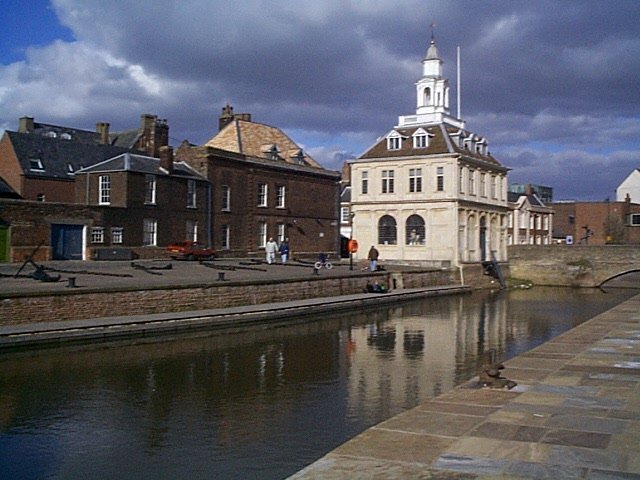|
[ The Heart on the Wall ]
History Of Kings Lynn
|

Kings
Lynn Town Hall

The
Custom House |
Now's the time to explore some of West Norfolk's fascinating history. As well as the maritime legacy of
King's Lynn, and the voyages Captain George Vancouver made to Canada, where he founded the town which now bears
his name. He was born here in 1757. There is a lot of history to discover in West Norfolk.
One of the most famous of houses in this area is Sandringham, bought by Queen Victoria in 1862 for the
future Edward VII. The public have access to the house, gardens, museum (seasonal) and park.
The nature of the public rooms provides an insight into the off-duty life of the royal family.
There is a museum, country park and gardens all available to the Public.
Other stately homes include Houghton Hall, built in the 1720s by Sir Robert Walpole. It is one of the finest
Palladian houses in the country. It is set in over 350 acres of parkland. It has walled garden and formal rose garden.
North east of Downham Market is the 12th century Castle Acre Priory. It contains a spectacularly west frontage
to its church. The walled herb garden and the prior's lodging give you an insight into the life of this priory, and Castle Acre village,
with its old Norman castle, these are worth a visit.
Further north you will find Castle Rising: once home to Queen Isabella, the 'She-Wolf of France', who plotted
the murder of her husband, Edward II. The 12th century keep stands in the center
of large earthworks, and there
are ,many views from the towers.
The legacy of the area's 'industrial' past is all around you.
You can visit windmills where you can see flour being ground and bread baked, and the large water pumps which help to keep the fertile Fens from being lost beneath the sea.
It has a rich seafaring history, there is Burnham Thorpe the birthplace of Admiral Lord Nelson.
West Norfolk is the perfect place for discovering the past. |
There was a settlement here in Saxon times, when the
boundaries of the Wash extended farther south and Lynn stood upon
the seashore. Just to the North and the West there are large areas of very level land known as marshes which were until
the middle ages under the sea. Before the Conquest the town belonged to the bishops of Thetford and stayed in the hands
of the church for centuries, so that it became known as Lynn Episcopal or Bishop's Lynn.
Its first charter was granted to King John in 1304. A charter of Henry V111 dated 1537 changed the name of the town to
Lynn Regis or King's Lynn. During the civil war in the 10c the town held true to its name and was for King Charles when
almost the whole of Norfolk was for Parliament. Lynn endured a short siege in 1643 but was soon taken because of
lack of supplies.
From Norman days onward Lynn flourished as a seaport and was for
long one of the greatest ports in England standing
conveniently on the east side of the country against the Continent. Its greatest prosperity appears to have been
from the 12c to the 15c and the most interesting buildings in the town date mostly from this period.
In modern times Lynn has developed considerable industries and has light industrial
estates outside of the town. These include engineering, canning, and fruit and vegetable processing.
The town originally was a walled town but most of the wall has now gone. Parts still remain,
The South Gate is the only surviving gate of the walls of Lynn, built about 1520AD.
Made of stone on the south or outer side and brick on the
North side. It is large and strong, with battlements and corner towers and has a large carriageway arch.
The traffic still goes through it into London Road which has Georgian houses of minor interest. Follow it past the
Millfleet to St Jame's Street. Here in a public garden is Greyfriars Tower standing on an octagonal head high into the
sky. It is all that remains of the friary of the Greyfriars. Beneath the arches at the foot of the tower are a stone
with a fluorinated cross and a standing cross the latter covered with carving including the
Crucification.
Also in the garden is some medieval arcading brought from a wall in Ferry Street. From the garden walk west along
St James to the Saturday Market which has notable buildings, foremost among them is St Margaret's church,
rising straight out from Saturday Market Place.
Any visitor to King's Lynn cannot help but be amazed at the wealth of experience that he will find and feel after
a visit to King's Lynn.
|

The
South Quay

Kings
Lynn Library

Greyfriars
Tower |

|
